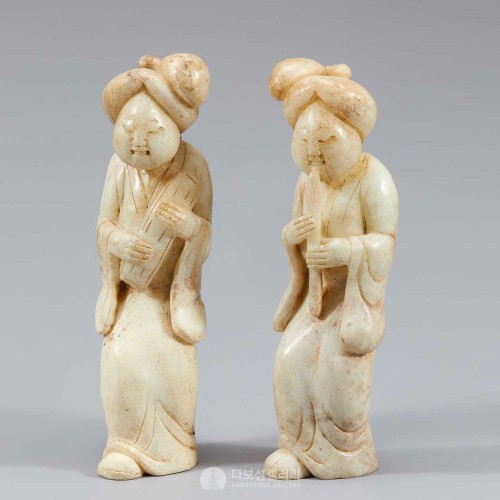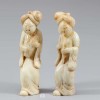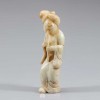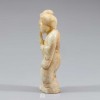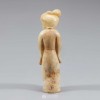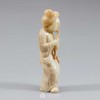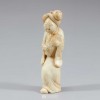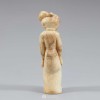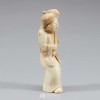본문
당나라 시기(618-907) 제작된 것으로 머리에 가를 둘러 쓴 두 명의 여인이 현악기와 피리를 연주하는 모습을 우윳빛의 옥을 깎아서 만든 여인상이다.
살집이 있는 통통한 얼굴에 비해 날렵한 몸, 하늘하늘한 옷자락과 악기를 든 손이 조각으로 정교하고 섬세하게 표현되어 있다.
예로부터 중국에서 옥은 전통적으로 매우 우아하고 아름다운 존재로 여겨졌다. 한나라(BC206~AD220)에서는 전염병을 치료하고 액막이를 하며 재앙을 물리치는 신묘한 기능이 있다고 여겨져, 몸에 착용하고 부적으로 삼아 평안을 기원하는 매체로 이용되었다. 이후 옥은 '사람이 옥을 이롭게 하고 옥이 사람을 이롭게 한다'는 뜻의 인양옥(人養玉) 옥양인(玉養人)이라는 애칭을 얻었고, 장기간 옥 제품을 몸에 착용하면 피부에 윤기가 돌고 빛이 나며 옥석에도 유지(油脂)가 들어가 더욱 투명해지고 반지르르해지는 효능이 있다고 믿어졌기 때문에 현재까지도 인기있는 원석 중 하나이다.
这是在唐代(618-907)用乳白色的玉石加工制造的在头上加彩一圈的两名女子提弦乐器和笛子演奏的玉乐女俑。
比起肥胖的脸庞,精巧细致表现了灵巧的身体,轻盈的衣角和拿着乐器的双手。
在中国,玉被视为非常优雅美丽的存在。在汉朝(BC202~AD220)赋予了治疗传染病、抵御厄运、战胜灾难的神奇功能,人们将其作为戴在身上的符咒,用来祈愿平安。 此后,人们经常用"人养玉,玉利人"来称赞玉,因为相信长期佩戴玉制品的话,人们的皮肤就会焕发光泽,玉石也会渗入油脂,变得更透明、光滑,直到现在玉也是人气很高的原石之一。
A pair of female figurines with wigs, holding a stringed instrument and a pipe, made of milky white jade in the Tang Dynasty (618-907). Compared with the plump faces, the slender bodies, the light airy clothes, and the hands holding the instruments are delicately and meticulously depicted.
Jade has been regarded as a very elegant and beautiful existence in China since ancient times. In the Han Dynasty (BC202~AD220), it was endowed with magical functions of curing infectious diseases, resisting bad luck, and defeating disasters. People used it as a charm worn on their bodies to pray for peace. Since then, people often called jade "ren yang yu, yu yang ren (人養玉,玉養人, people raise jade, jade benefits people)" because they believed that if people wear jade products for a long time, their skin will glow, and jade will penetrate oil and become more transparent and smooth. For this, jade is one of the most popular rough stones until now.
